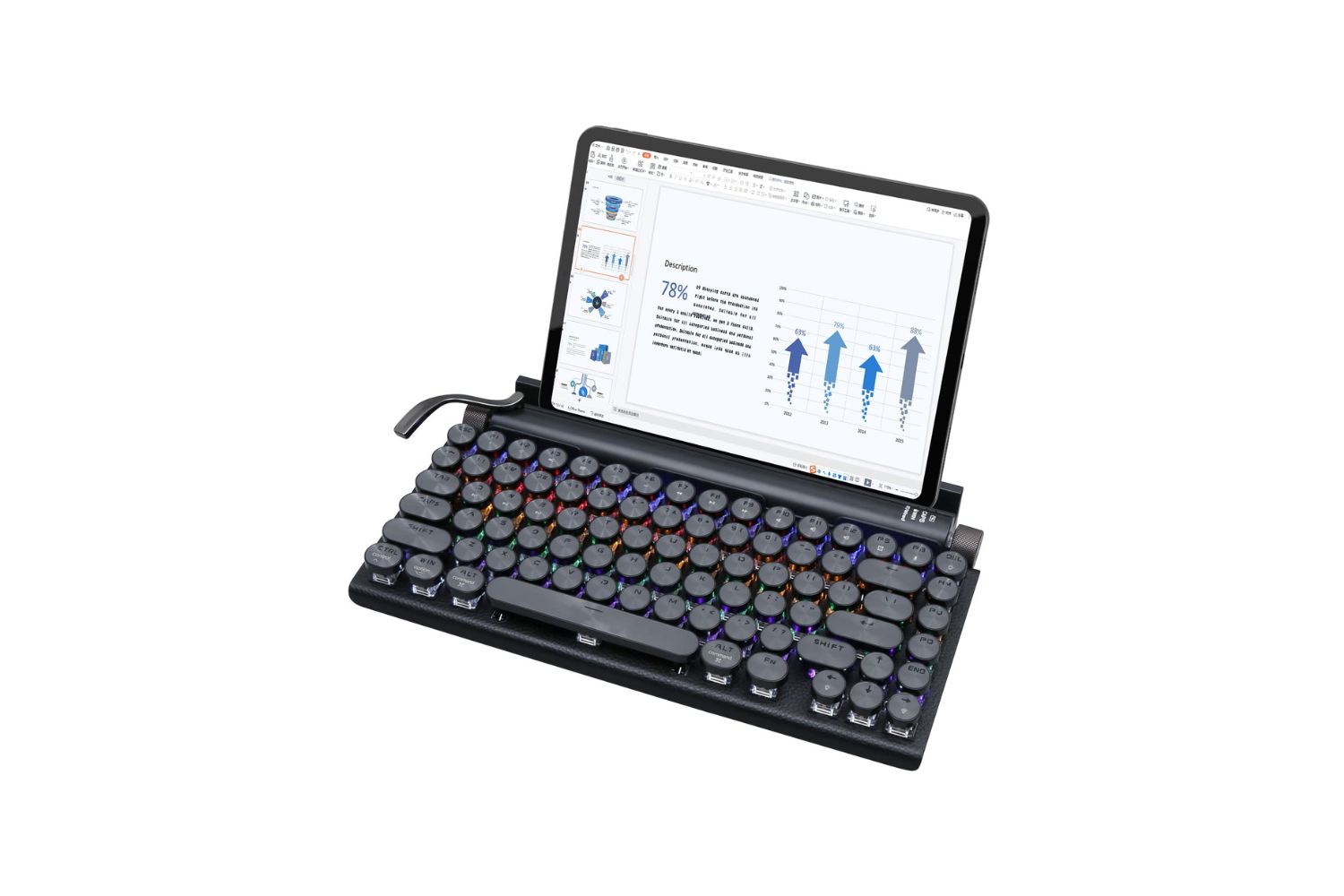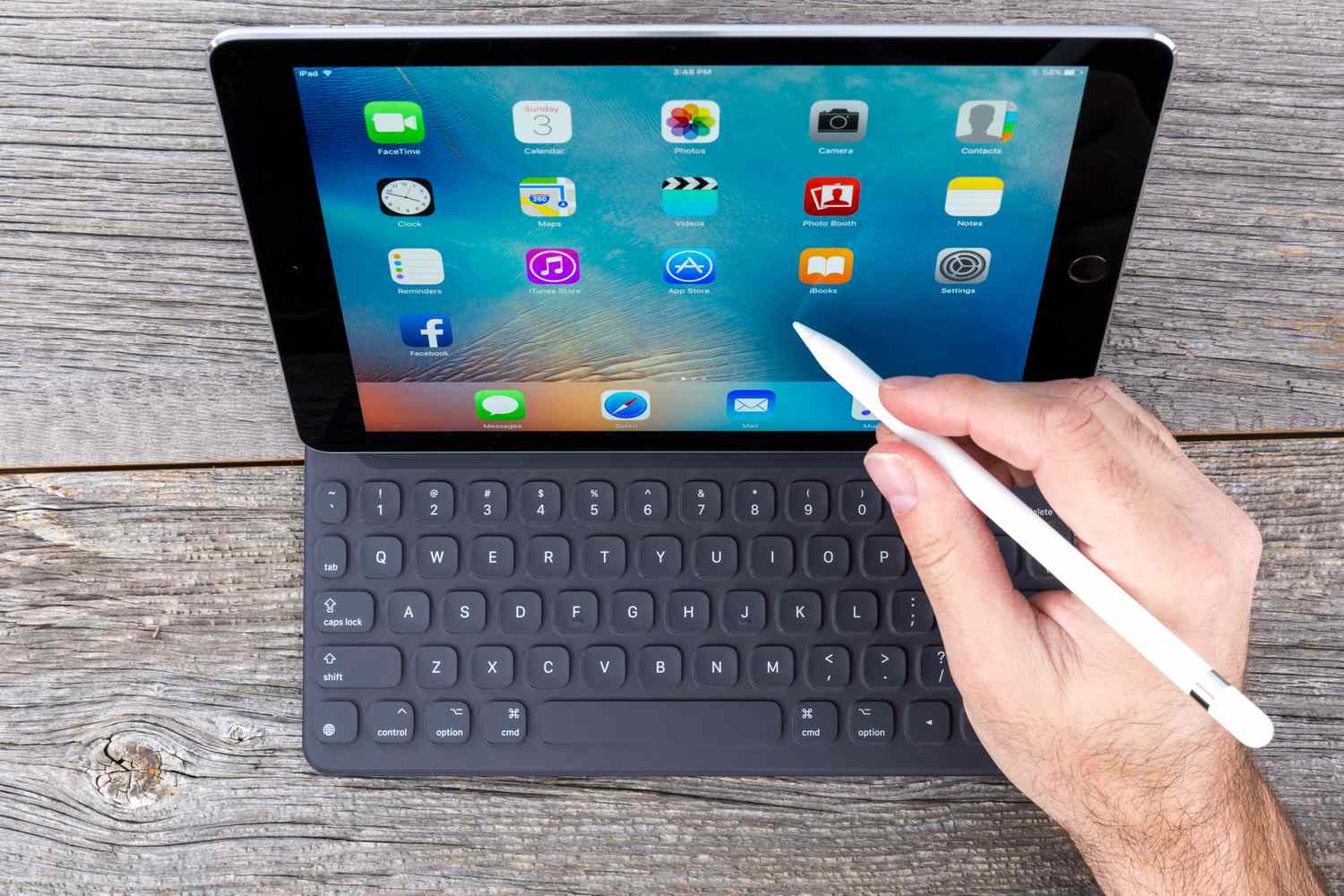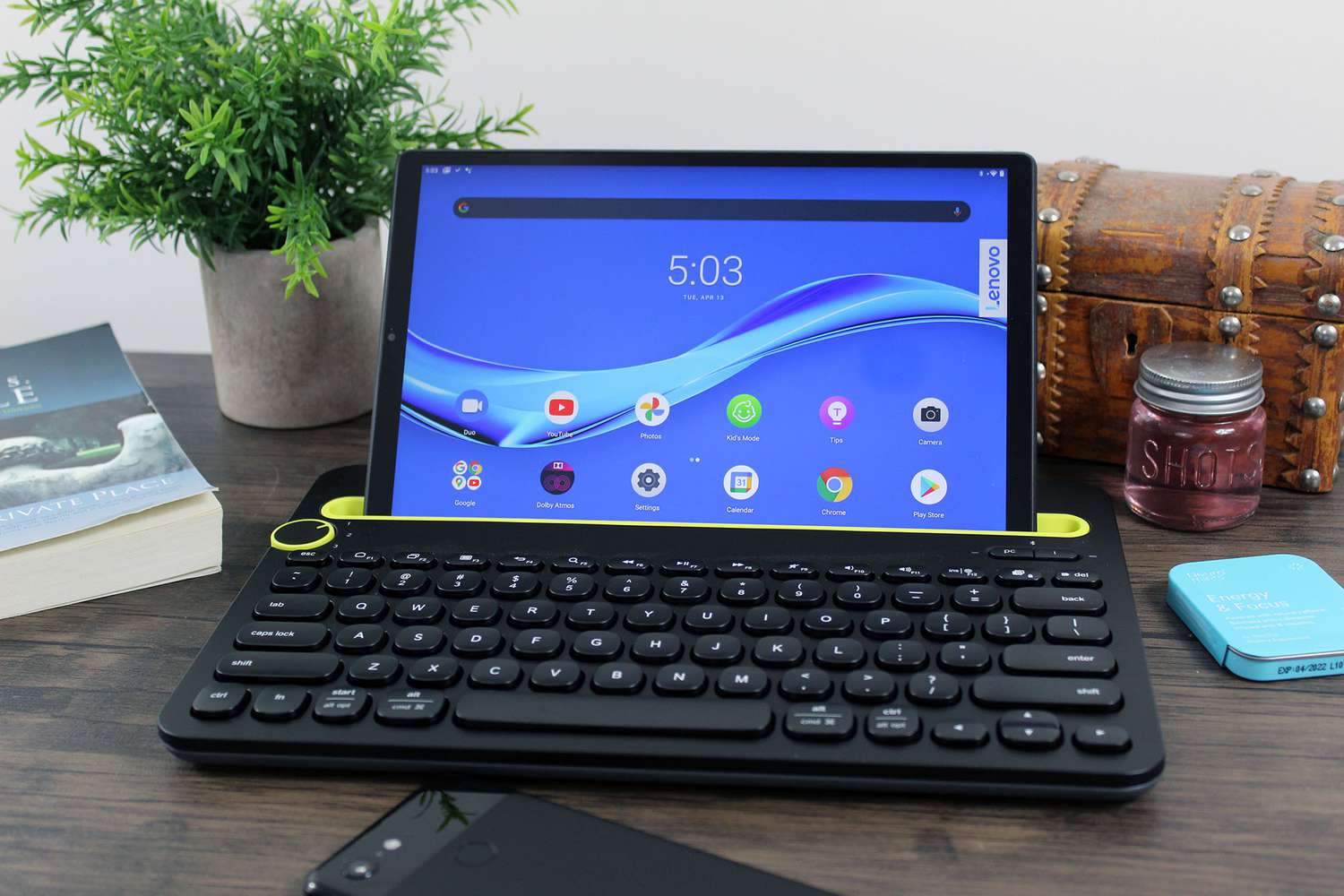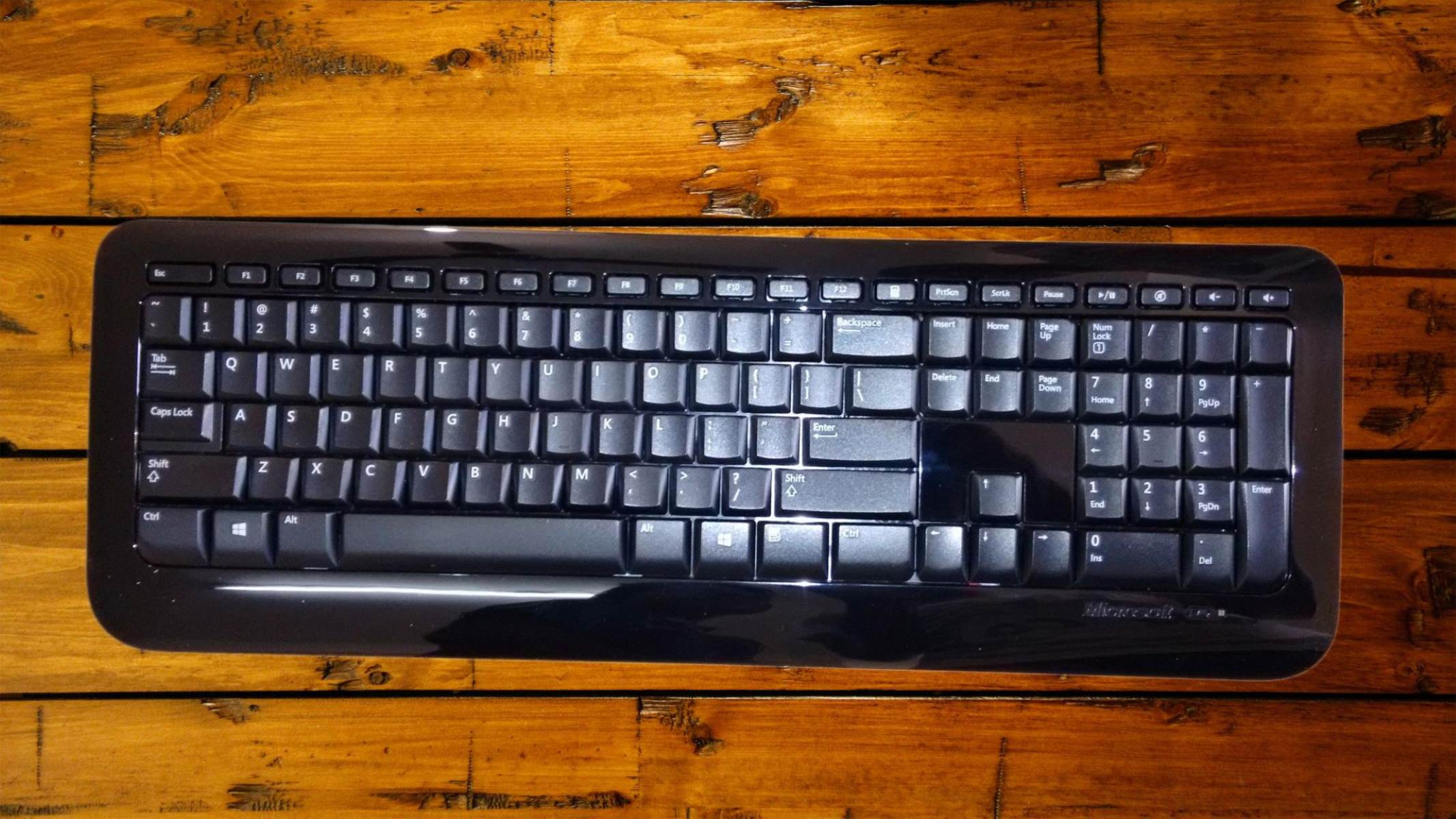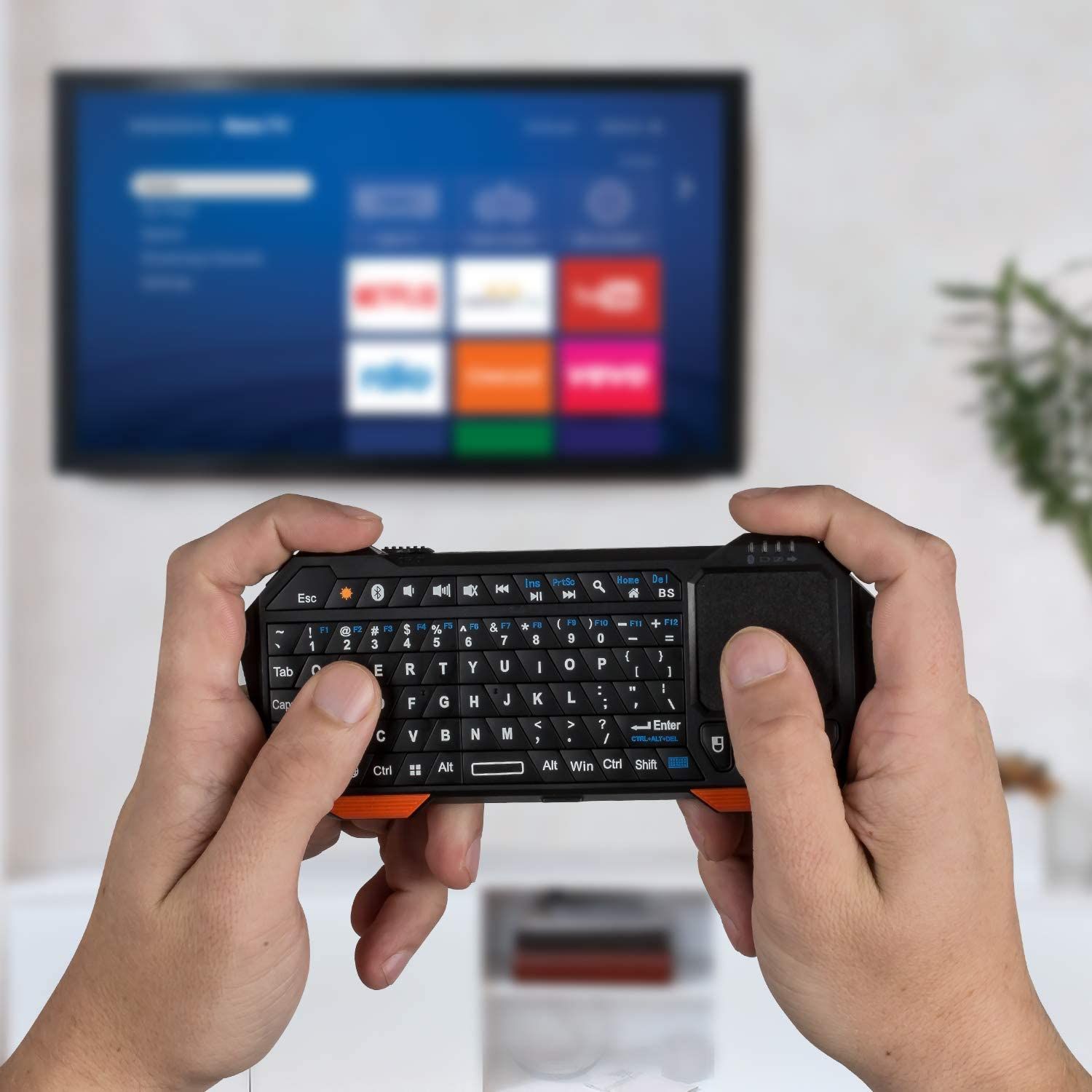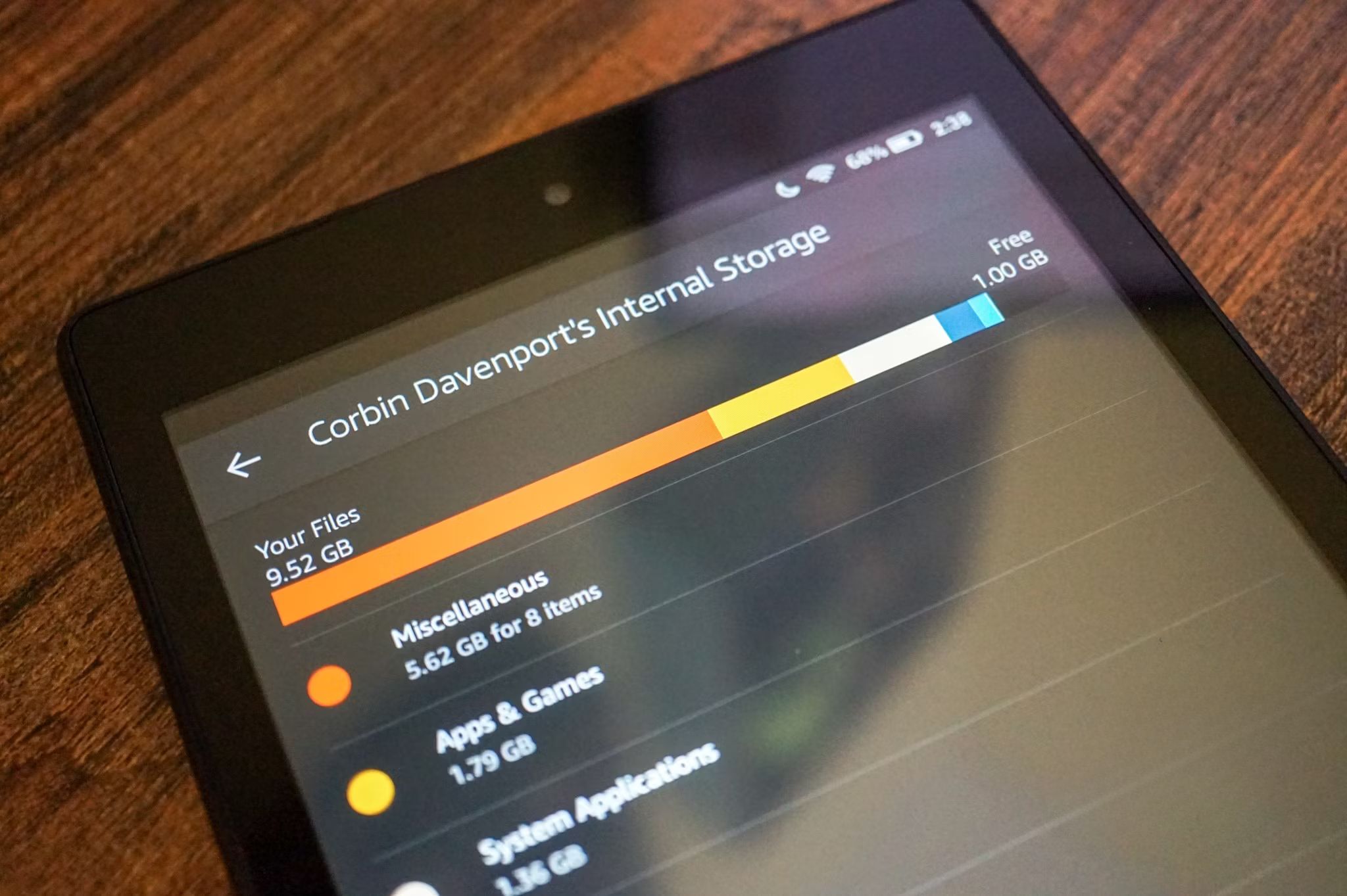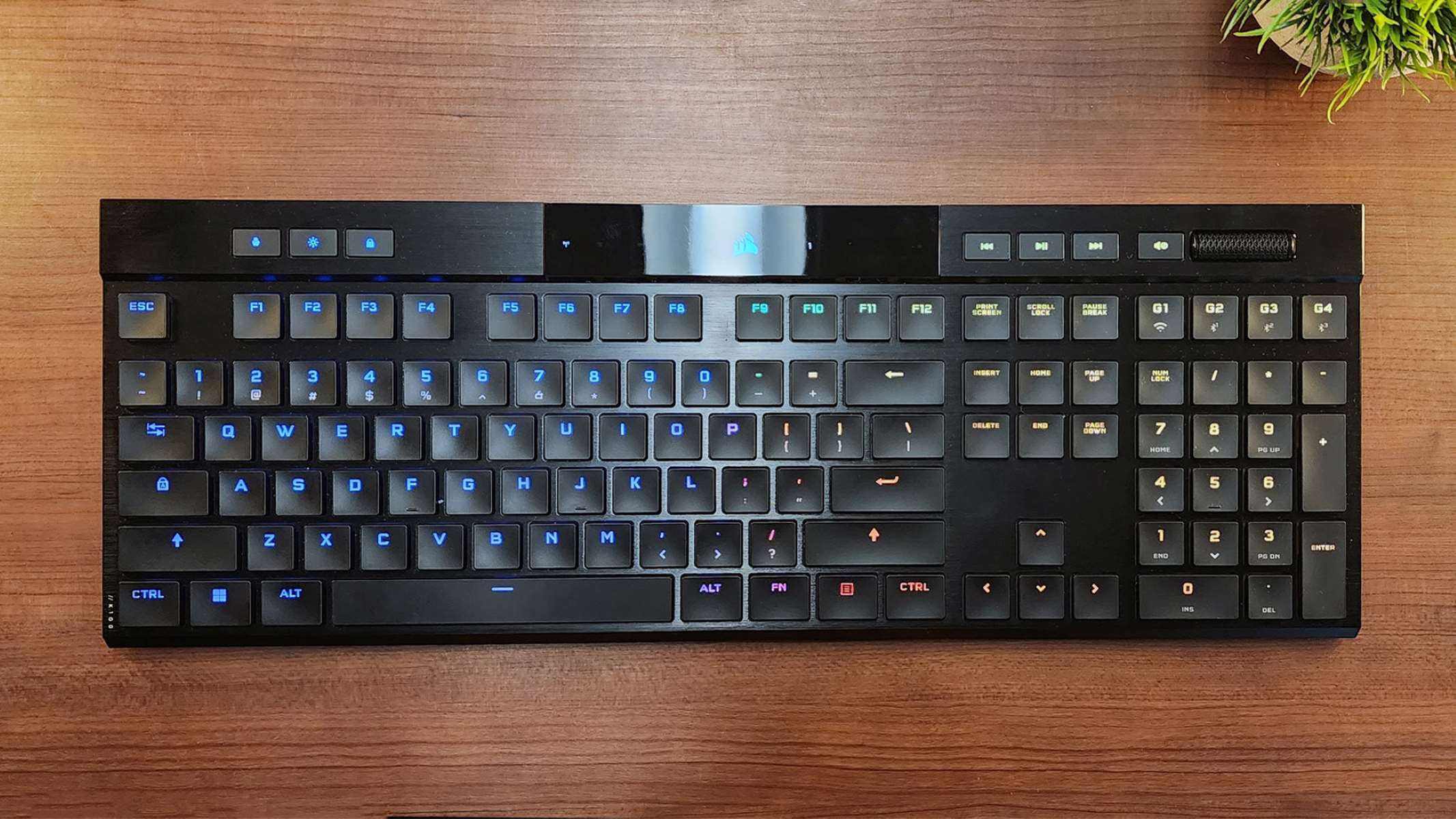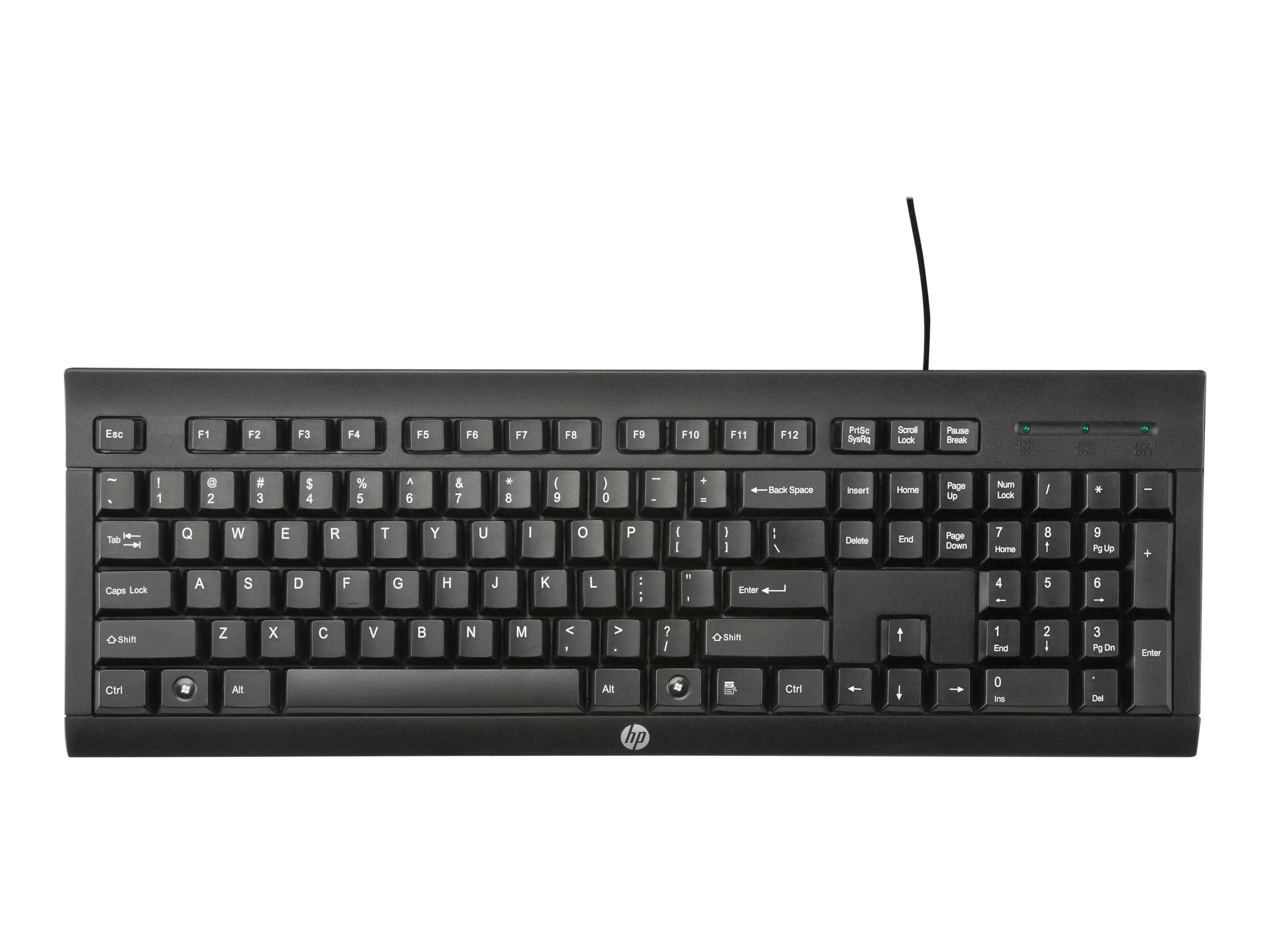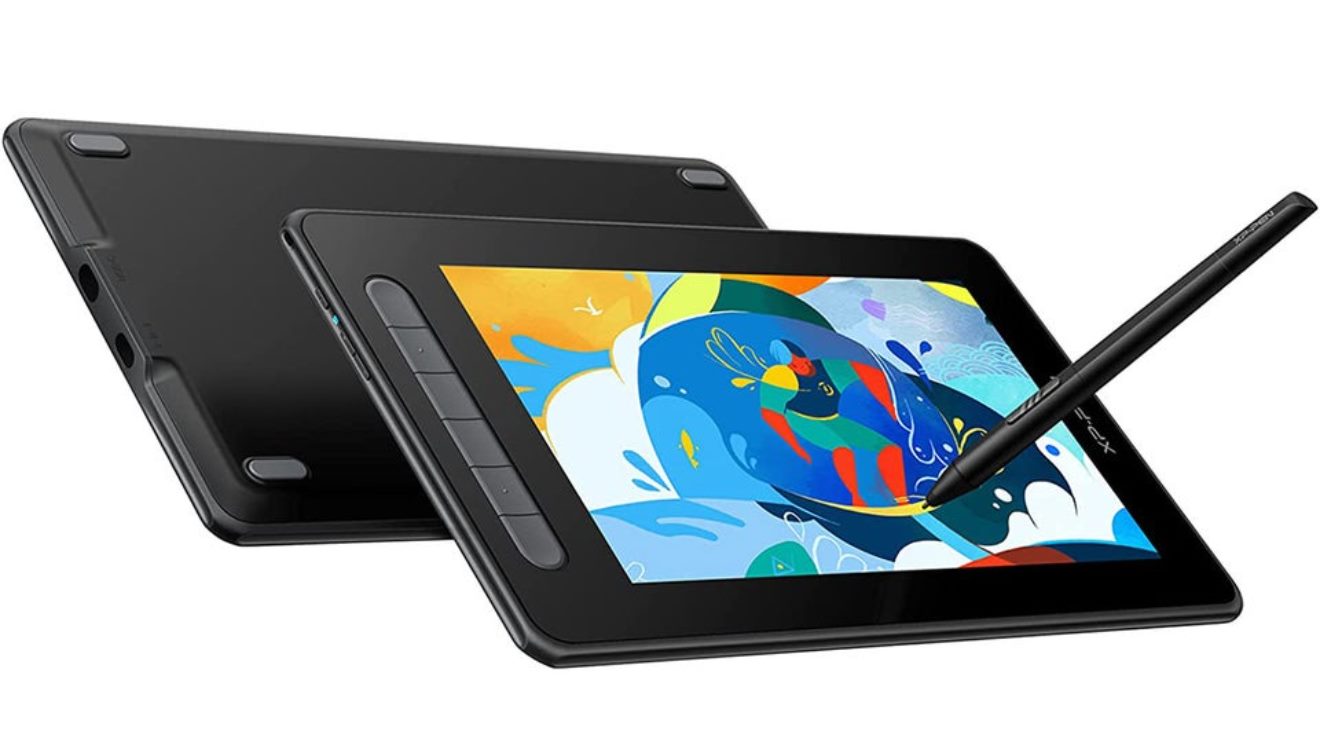Introduction
Tablets have become an indispensable tool for many people, offering the convenience of portability combined with powerful computing capabilities. However, typing on a touchscreen can sometimes be a bit challenging, especially for those who are used to the tactile feel of a physical keyboard. Luckily, there’s a solution – you can connect a wired keyboard to your tablet.
In this article, we will guide you through the process of connecting a wired keyboard to your tablet, allowing you to type with ease and efficiency. Whether you need to write emails, work on documents, or simply want a more comfortable typing experience, connecting a keyboard to your tablet can significantly enhance your productivity.
Before we dive into the steps, it’s important to note that not all tablets support wired keyboards. Some tablets may only have a micro USB or USB-C port, while others may have a dedicated keyboard connector. Therefore, it’s crucial to first check the compatibility of your tablet and ensure that it has the necessary port to connect the keyboard.
Additionally, you will need a USB keyboard that is compatible with your tablet and a USB adapter, if required. Once you have confirmed the compatibility and gathered the necessary equipment, you can proceed with the steps outlined below to connect your wired keyboard to your tablet.
Step 1: Check the compatibility of your tablet and keyboard
Before you begin the process of connecting a wired keyboard to your tablet, it’s important to ensure that both devices are compatible. This step is crucial as it determines whether your tablet has the necessary port or connector to connect the keyboard.
Start by checking the physical ports and connectors on your tablet. Most tablets have either a micro USB or USB-C port, while others may have a dedicated keyboard connector. Take a close look at your tablet and identify the available ports.
If your tablet has a micro USB or USB-C port, you will need an adapter to connect the USB keyboard. The adapter should match the type of port on your tablet, whether it’s micro USB or USB-C. You can easily find these adapters online or at electronic stores.
Once you have identified the type of port on your tablet and gathered the necessary adapter, it’s time to check the compatibility of your USB keyboard. Most USB keyboards are compatible with tablets, but it’s always a good idea to double-check the specifications. Look for any specific compatibility requirements and ensure that your keyboard meets them.
Some keyboards may require additional drivers or software to function properly with tablets. Check the manufacturer’s website or user manual for any specific instructions on connecting the keyboard to a tablet. Make sure that your tablet’s operating system supports the keyboard as well.
By thoroughly checking the compatibility of your tablet and keyboard, you can avoid any compatibility issues and ensure a smooth and successful connection.
Step 2: Gather the necessary equipment
Before proceeding with the connection process, it’s important to gather all the necessary equipment. This step ensures that you have everything you need to successfully connect the wired keyboard to your tablet.
The primary equipment you will need is a USB keyboard that is compatible with your tablet. Make sure the keyboard has a USB connector that matches the port on your tablet, whether it’s micro USB or USB-C.
If your tablet has a different type of port, such as a dedicated keyboard connector, ensure that the keyboard you choose is designed to work with that specific connector.
If your tablet has a micro USB or USB-C port, you may also need a USB adapter. This adapter will allow you to connect the USB keyboard to your tablet’s port. Make sure to choose an adapter that matches the type of port on your tablet, whether it’s micro USB or USB-C.
Additionally, if your keyboard requires power, ensure that you have the necessary power source, such as batteries or USB power. Check the user manual or packaging of your keyboard to determine if batteries are required and if they are included in the package.
Having all the required equipment at hand before starting the connection process will ensure a smooth and hassle-free experience. Double-check that you have the correct keyboard, the necessary adapter (if applicable), and any required power source to avoid any interruptions during the setup process.
Step 3: Connect the USB keyboard to the tablet
Now that you have confirmed the compatibility and gathered the necessary equipment, it’s time to connect the USB keyboard to your tablet. Follow these steps to establish a physical connection between the two devices:
- Ensure that your tablet is powered off, or at least in sleep mode, to avoid any potential interference during the connection process.
- Locate the USB port on your tablet. If your tablet has a micro USB or USB-C port, connect the USB end of the keyboard directly into the tablet’s port.
- If your tablet has a different type of port, such as a dedicated keyboard connector, use the appropriate adapter to connect the USB keyboard to the tablet. Plug the adapter into the tablet’s port, and then connect the USB end of the keyboard to the adapter.
- Once the USB connection is established, your tablet should recognize the keyboard automatically. In some cases, you may need to wait for a few seconds for the recognition process to complete.
- Power on your tablet if it was powered off, and the connected USB keyboard should be ready for use.
It’s important to note that the steps may vary slightly depending on the specific tablet model and operating system. However, the general process remains the same – connecting the USB keyboard to the tablet’s USB port or using an appropriate adapter.
After successfully connecting the USB keyboard to your tablet, you should be able to start typing on the physical keyboard and see the input reflected on the tablet’s screen.
If the keyboard is not recognized or doesn’t function properly after connecting, try disconnecting and reconnecting the USB cable. Additionally, ensure that the keyboard is powered on (if applicable) and that the tablet’s operating system is up to date.
With the USB keyboard successfully connected to your tablet, you can now enjoy the convenience and efficiency of typing with a physical keyboard for your various tasks and activities.
Step 4: Adjust the tablet settings
After connecting the USB keyboard to your tablet, it’s important to make a few adjustments to the tablet’s settings to ensure optimal functionality and customization. Follow these steps to adjust the settings:
- Access the settings menu on your tablet. This can usually be done by tapping on the gear icon in the notification shade or by opening the app drawer and searching for the settings app.
- Once in the settings menu, navigate to the “Language & Input” or “Keyboard” section. The exact naming and location of this section may vary depending on your tablet’s manufacturer and operating system.
- In the “Language & Input” or “Keyboard” section, you should see an option to manage your keyboard settings. Tap on this option to proceed.
- Look for the option to select the default input method. You should see your USB keyboard listed as an available input method. Tap on the keyboard name to select it as the default.
- Explore the additional settings and customization options for your USB keyboard. Depending on your tablet’s operating system, you may have options to adjust keyboard layouts, autocorrect settings, or keyboard shortcuts.
- Make any desired adjustments to suit your preferences. For example, you might want to enable autocorrect or adjust the key press sound volume.
- Once you have made the necessary adjustments, exit the settings menu. Your tablet is now configured to use the connected USB keyboard as the default input method.
By adjusting the tablet settings, you can ensure that the USB keyboard works seamlessly with your tablet. These settings allow you to customize the typing experience to fit your needs and preferences.
It’s worth mentioning that the available settings and customization options may vary depending on your tablet’s manufacturer and operating system. Some tablets offer more advanced features and options, while others may have limited settings for external keyboards. Explore the settings menu thoroughly to make the most of the available options.
With the tablet settings adjusted, you are now ready to use your USB keyboard effectively and efficiently for all your typing needs on the tablet.
Step 5: Test the keyboard functionality
Once you have connected the USB keyboard to your tablet and adjusted the settings, it’s important to test the keyboard functionality to ensure that everything is working correctly. Follow these steps to test the keyboard:
- Open any application that requires text input, such as a text editor, word processor, or messaging app.
- Position the cursor in the text field where you want to type.
- Start typing on the USB keyboard. You should see the characters appearing on the screen as you press the keys.
- Test the basic functions of the keyboard, such as typing letters, numbers, and symbols. Also, try the special function keys if your keyboard has any.
- Verify that all the keys on the keyboard are functioning properly. Check for any keys that may be stuck or unresponsive.
- Test additional features and shortcuts that your keyboard may have, such as media playback controls or volume adjustment keys.
- Ensure that the keyboard shortcuts, if applicable, are working as expected.
- If you encounter any issues or inconsistencies during testing, disconnect and reconnect the USB keyboard, restart your tablet, and verify the settings. If the problem persists, consult the keyboard’s user manual or contact the manufacturer for further assistance.
By thoroughly testing the keyboard functionality, you can ensure that it performs reliably and meets your expectations. This step allows you to identify and resolve any potential issues or glitches before relying on the keyboard for important tasks or activities.
Remember that the functionality of the keyboard may also depend on the specific application you’re using. Some applications may have different keyboard behavior or shortcuts, so it’s a good idea to experiment with different applications and scenarios to fully understand the capabilities of your USB keyboard.
With the keyboard functionality successfully tested, you can now enjoy the seamless and efficient typing experience on your tablet.
Conclusion
Connecting a wired keyboard to your tablet can greatly enhance your typing experience, providing a comfortable and efficient way to input text. Whether you need to respond to emails, work on documents, or simply prefer the tactile feel of a physical keyboard, following the steps outlined in this article will allow you to successfully connect and use a USB keyboard with your tablet.
Remember to check the compatibility of your tablet and keyboard, gather the necessary equipment, and make any required adjustments to the tablet’s settings. Testing the keyboard functionality ensures that everything is working correctly and allows you to familiarize yourself with the keyboard’s features and shortcuts.
Keep in mind that while the steps provided in this article are general guidelines, the specific process may vary depending on your tablet’s manufacturer, model, and operating system. It’s always a good idea to consult your tablet’s user manual or the keyboard manufacturer’s instructions for any device-specific guidance.
With the wired keyboard successfully connected and tested, you can now enjoy a more comfortable and productive typing experience on your tablet. Whether you’re using it for work, entertainment, or communication, the convenience of a physical keyboard will undoubtedly enhance your overall tablet usage.
So, go ahead and connect the wired keyboard to your tablet, and unlock a whole new level of typing convenience and efficiency. Get ready to breeze through your tasks, type with confidence, and make the most out of your tablet’s capabilities.







